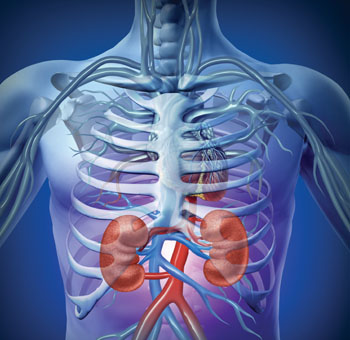Exposure to Toxins in Children Associated with Kidney Disease Biomarker
By LabMedica International staff writers
Posted on 26 Jul 2016
Researchers have assessed environmental exposure to multiple toxins in children living in a region of Mexico with a high incidence of chronic kidney disease, especially among young adults. They not only detected high levels of arsenic and chromium in urine samples, they also detected elevated levels of Kidney Injury Molecule-1 (KIM-1), a biomarker currently being studied as an early sign of kidney injury. Posted on 26 Jul 2016
Exposure to environmental toxins – such as arsenic, cadmium, chromium, lead, and other heavy metals – early in life via contaminated water or other sources often have long-term health consequences as children grow. Investigators at Brigham and Women's Hospital (BWH; Boston, MA, USA) and Harvard Medical School (Boston, MA, USA) have found exceedingly high levels of arsenic and chromium in urine samples collected from 107 children living in the north-central region of Mexico – levels that were even higher than exposure limits set for adults. When the team measured traditional biomarkers of kidney function – such as those measured at a routine physical exam – they did not find elevated levels of these markers. However, more sensitive and specific biomarkers of kidney injury recently qualified by the FDA for use in preclinical studies, e.g. KIM-1, were elevated in the children. KIM-1 might serve as a sensitive biomarker to screen children for kidney damage induced by environmental toxic agents.

Image: New research shows children living in Mexico who are exposed to multiple toxins evidence a higher incidence of chronic kidney disease (Photo courtesy of BWH).
“Until now, no one has studied these children – an especially vulnerable population – to determine their risk of exposure and possible measures of kidney dysfunction,” said senior author Vishal Vaidya, PhD, of BWH and Harvard, “KIM-1 may be an early warning sign of exposure, suggesting that something may be beginning to go wrong in the epithelial cells in the kidneys of these children. Many questions remain to be answered. We don’t know if this effect might be reversible, we don’t know if there are other kidney toxic contaminants such as uranium present as well. Because we don’t have follow-up data from these children we also don’t know the long-term consequences of this exposure. But this does give us our first insights into this population at a young age.”
“For the first time, we’ve been able to evaluate and assess an early warning sign of kidney injury – one that may give us the ability to act in advance before there is irreversible harm,” said first author Mariana Cardenas-Gonzalez, PhD, postdoctoral fellow in the Vaidya lab, “This may be a problem that can be solved by reducing exposure, but first we need to understand how such high levels of these toxins are winding up in the urine of these children.”
The research team also tested water samples from the children’s tap water, identifying contaminated drinking supply as the likely source of arsenic. The source of chromium, however, remains unknown so further investigation is needed. Chromium exposure can come from contaminated air, soil, water, food, or tobacco products.
The study, by Cardenas-Gonzalez M et al, was published online July 15, 2016, in the journal Environmental Research.
Related Links:
Brigham and Women's Hospital
Harvard Medical School













